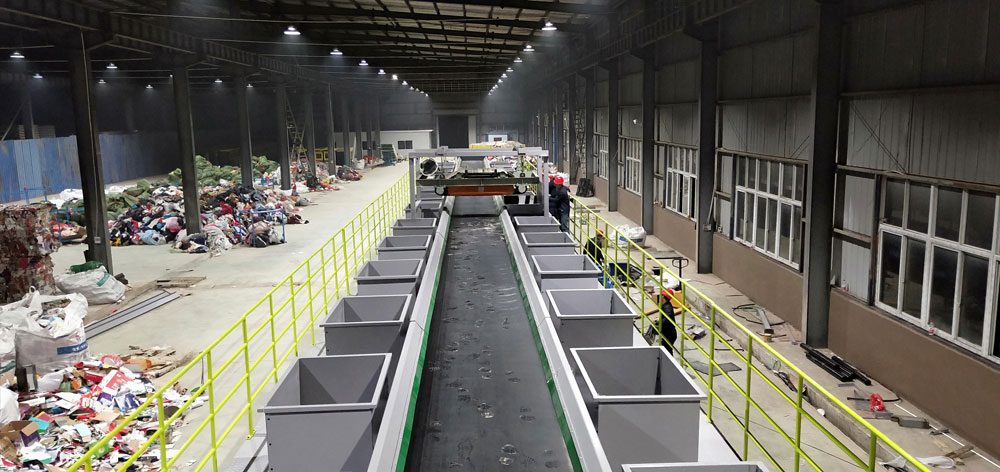 Time:2025-01-09
Time:2025-01-09
 Source:青绿环境
Source:青绿环境
In today's rapidly accelerating urbanization and continuous population growth, the production of domestic waste is increasing day by day, posing significant challenges to urban environmental management. The concept of a "waste-free city" has emerged accordingly, and the application of waste sorting equipment has become an important aid in realizing this concept.

Waste sorting equipment excels in improving the efficiency and accuracy of waste processing. Traditional manual sorting is inefficient and prone to errors, while modern waste sorting equipment employs advanced sensor technology, image recognition technology, and artificial intelligence algorithms. The intelligent and efficient sorting system can achieve the disposal capacity of low-value recyclables. Based on intelligent sorting technologies such as visual perception, deep learning neural networks, AI intelligence, and near-infrared flying light scanning, it can automate and intelligently sort a variety of dispersed and mixed low-value recyclables, with a sorting accuracy rate of over 95%. On the fast-moving conveyor belts, various low-value recyclables such as takeout boxes, milk tea cups, instant noodle buckets, and express packaging boxes are automatically identified and sorted. The entire process keeps materials off the ground, greatly improving the quality and efficiency of sorting.
A standardized waste sorting process is inseparable from the support of these devices. A complete waste sorting system includes preliminary sorting, fine sorting, recycling, and harmless treatment, among other stages. During the fine sorting stage, waste sorting equipment can categorize waste more meticulously based on its specific properties. For example, it can further separate recyclables such as paper, plastic, and metal, ensuring their efficient recycling and utilization. This provides a strong guarantee for the resource utilization and reduction of waste.
From the perspective of the overall construction of a "waste-free city," the application of waste sorting equipment has profound significance. Firstly, the introduction of these devices can enhance waste processing capabilities. Through data analysis and optimization, they provide a scientific basis for urban waste management. City managers can accurately grasp the characteristics and patterns of waste generation based on sorting data, thereby formulating more reasonable waste governance strategies. Secondly, it helps promote the green and low-carbon transformation of cities. Waste sorting equipment increases the resource utilization rate of waste, reduces the exploitation of natural resources, and plays an important role in reducing waste emissions. This aligns highly with the principles of "reduction, resource utilization, and harmlessness" followed in the construction of a "waste-free city."
In summary, the widespread application of waste sorting equipment is an important support for the construction of a "waste-free city." We should actively promote its technological innovation and development, enabling it to play a greater role in building a clean, beautiful, and harmonious urban environment.













 Prev
Prev











